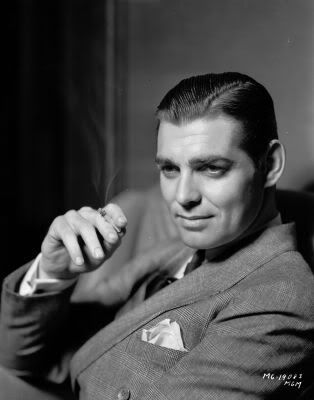
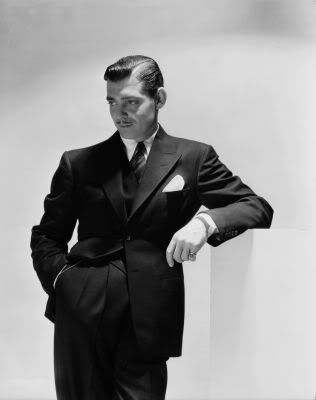
Biography (lifted from the TCM Website):
The former blue-collar worker from Ohio with the prominently jutting ears became the 'King of Hollywood', a title based on his being the leading male box office attraction throughout the 1930s. The dashing, mustachioed image of Rhett Butler in "Gone with the Wind" (1939) remains indelibly associated with the name Clark Gable, but before his "Frankly, my dear, I don't give a damn" made screen history, Gable (with the aid of his MGM publicist Howard Strickland) had already established a distinctive screen persona as the virile, lovable rogue whose gruff facade only thinly masked a natural charm and goodness. Following his marriage to actress Josephine Dillon, Gable played bit parts in several silent Hollywood features (e.g., "The Merry Widow", 1925) but he first achieved fame as a leading man on Broadway in the late 20s. With the flourishing of sound films, Gable joined the new generation of movie actors who made the move from New York to Hollywood in the early 30s. On the advice of director/actor Lionel Barrymore MGM granted him a screen test and, after a talkie debut in a Pathe western ("The Painted Desert" 1931), Gable signed a contract with the prestigious Metro studio, where he remained until 1954. In his first year alone, Gable appeared in a dozen features, quickly rising from supporting player to romantic lead. He was teamed with all of MGM's leading ladies, most notably opposite Norma Shearer in "A Free Soul" (1931), Greta Garbo in "Susan Lenox, Her Fall and Rise" (1931) and Joan Crawford in "The Possessed" (1931)--though he proved equally adept in male-oriented action sagas ("The Secret Six", "Sporting Blood", "Hell Divers", all 1931).
Despite his rising popularity, Gable balked at having to play gangsters and overly callous characters. In a now legendary act of studio disciplining, Louis B. Mayer "punished" Gable by loaning him out to lowly Columbia for a role in a minor romantic comedy. The project, Frank Capra's "It Happened One Night" (1934), unexpectedly became the first film to sweep the five major Oscars (for best actor, actress, director, writer, and picture) and vaulted Gable to new prominence in the industry. His sensational appearance "sans" undershirt in the film's bedroom scene went down in Hollywood legend as the event that caused American males to make fewer trips to the haberdasher. While its effect on undershirt purchases may be purely apochryphal, the publicity from the event no doubt led to Gable's next major role, that of the bare-chested Fletcher Christian in MGM's "Mutiny on the Bounty" (1935), another Oscar-winner for Best Picture.
With such success under his belt, Gable commanded even greater star treatment at Metro and began appearing in fewer films each year, although his range of genre vehicle expanded. He continued his string of romantic comedies with Jean Harlow ("Red Dust" 1932, "Hold Your Man" 1933, "China Seas" 1935, "Wife vs. Secretary" 1936, and "Saratoga" 1937), but also made off-beat musical appearances ("San Francisco", "Cain and Mabel", both 1936; the comedy-drama "Idiot's Delight" 1939, in which he sang "Puttin' on the Ritz"), action dramas ("The Call of the Wild" 1935, "Test Pilot" 1938) and romances ("Love on the Run" 1936). With MGM even promoting his image in its other feature films (Judy Garland singing "Dear Mr. Gable--You Made Me Love You" in "Broadway Melody of 1938" and Mickey Rooney doing Gable impressions in "Babes in Arms" 1939) Clark Gable remained King of the Hollywood box office throughout the decade, culminating in his highly publicized and memorable performance in "Gone With the Wind." Only his ill-conceived biopic "Parnell" (1937) interrupted a string of popular successes.
Gable's reign at the top of Hollywood stardom in 1939 was enhanced by his storybook romance and marriage to actress Carole Lombard. Her untimely death in a plane crash in January 1942 marked a tragic downturn in Gable's life. He turned his back on his film career and enlisted in the Army Air Corps. After two years of decorated combat service, Gable returned to the screen in 1945 with his macho hero's image only further amplified. But despite much studio publicity for his return in "Adventure" ("Gable's Back and Garson's Got Him") and some box office success, Gable's post-war film career consisted mostly of routine, undistinguished vehicles. He consistently starred in one film a year, but never regained his status of 30s. Still, there were no pretenders to the throne. When MGM remade "Red Dust" in 1953 as "Mogambo", Ava Gardner was in for Harlow, Grace Kelly played the Mary Astor role, and Gable's part? Only Gable could fill Gable's shoes, even twenty-one years later.
After a short-lived marriage (Lady Sylvia Ashley) and an unsuccessful attempt at independent production in the 1950s, Gable proved himself the King one last time, romancing the fragile Marilyn Monroe in John Huston's "The Misfits" (1961). His performance was greatly praised, but Gable had insisted on performing his own stunts, including breaking a horse. Doctors had warned him about an already weakened heart and the exertion proved too much (this would be Monroe's last completed film as well). He widowed his fifth wife, the former Kay Spreckles, in 1960, shortly before she gave birth to John Clark Gable, the son Gable had always longed for. As per his last wishes, Spreckles buried him alongside the great love of his life, Carole Lombard.
Red Dust (1932) (with Jean Harlow):
*this film was remade 21 years later as Mogombo, with Gable again in the lead role
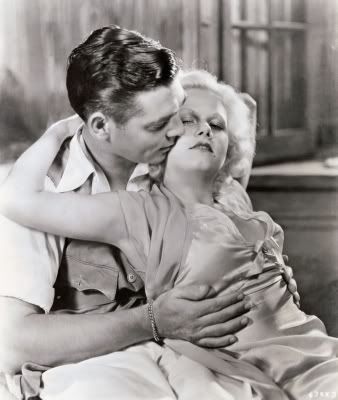
No Man of Her Own (1933) (with Carol Lombard):
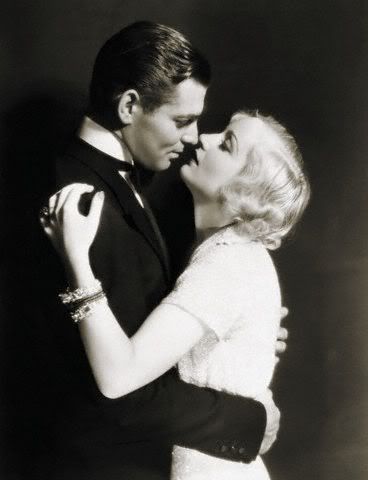
Men in White (1934):
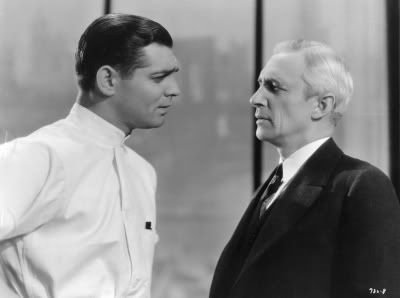
It Happened One Night (1934) (with Claudette Colbert)
*Won Oscar for Best Actor
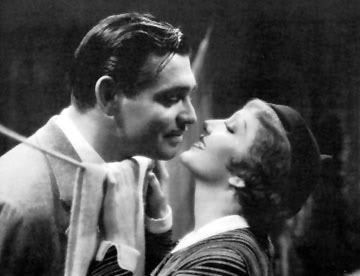
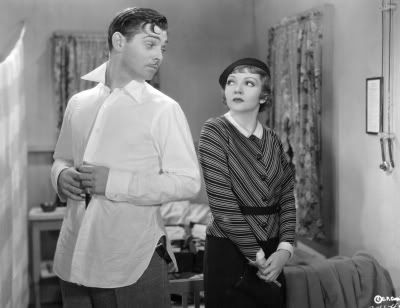
Chained (1934) (with Joan Crawford):
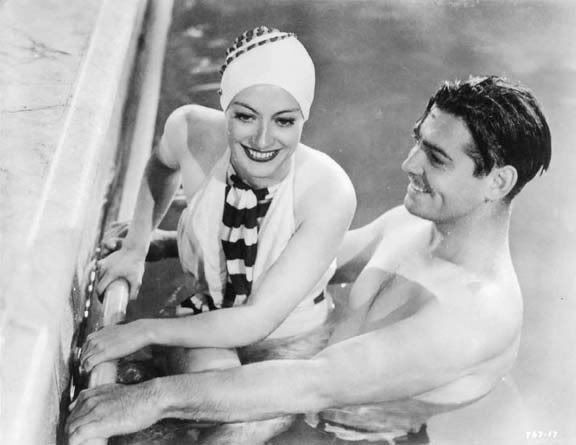
Mutiny on the Bounty (1935) (with Charles Laughton):
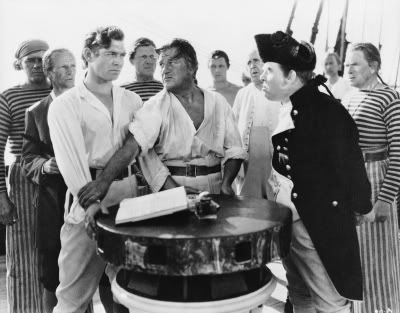
San Francisco (1936):
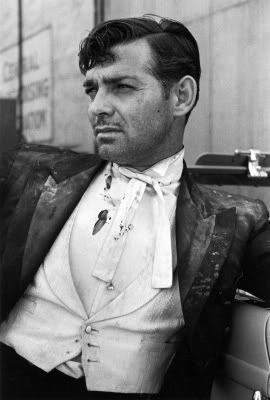
Wife vs. Secretary (1936)(with Jean Harlow):
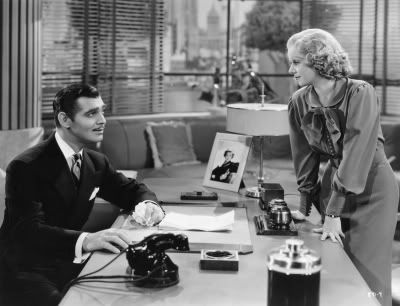
Gone With The Wind (1939) (with Vivien Leigh in some photos):


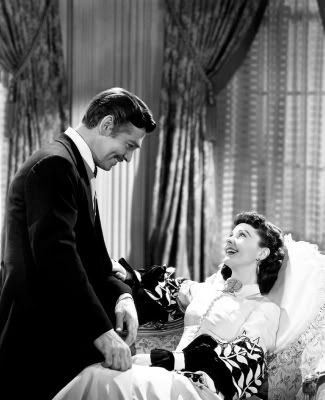
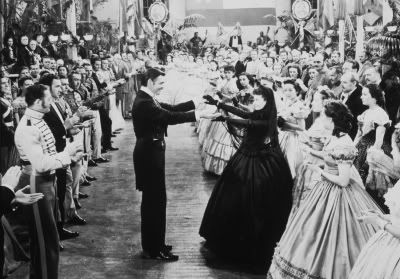
Idiot's Delight (1939):
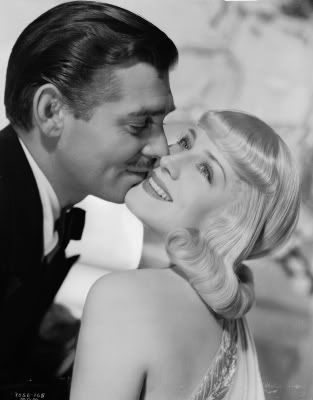
Comrade X (1940) (with Hedy Lamarr):
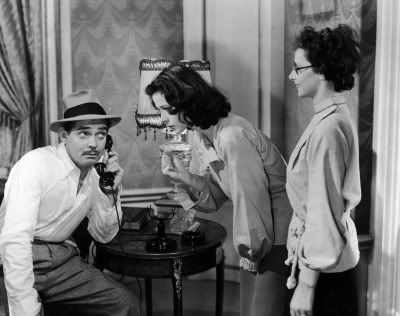
Boom Town (1940) (with Claudette Colbert):
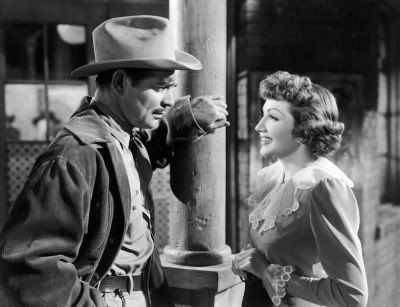
They Met in Bombay (1941) (with Rosalind Russell):
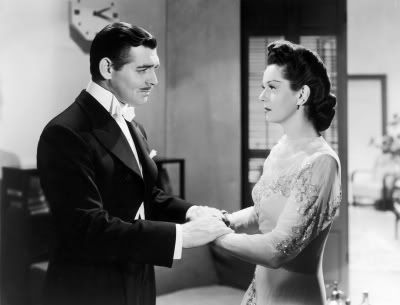
Command Decision (1948):
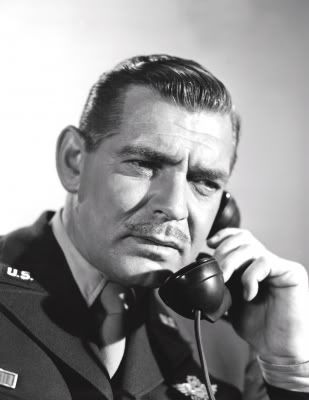
Mogombo (1953) (with Ava Gardner):

Run Silent, Run Deep (1958) (with Burt Lancaster):
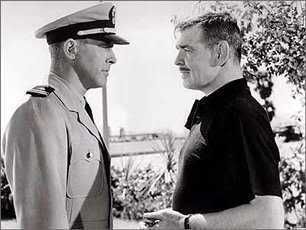
The Misfits (1961) (with Marilyn Monroe):
*within a year after completion of this picture, both Gable and Monroe had passed away. This was both star's last picture.
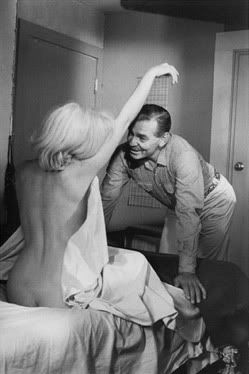
Publicity Shots:
In The Military (WWII):
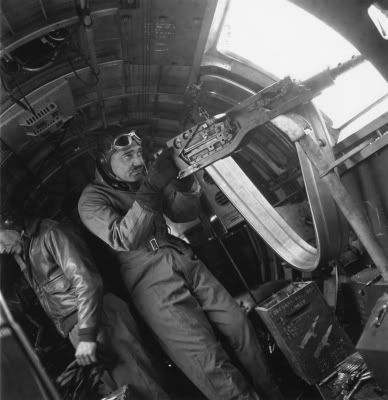
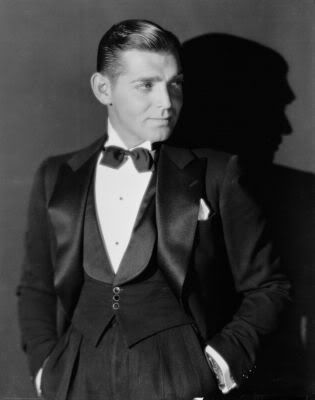
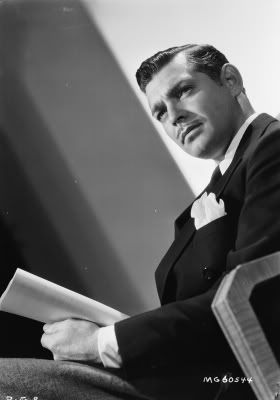
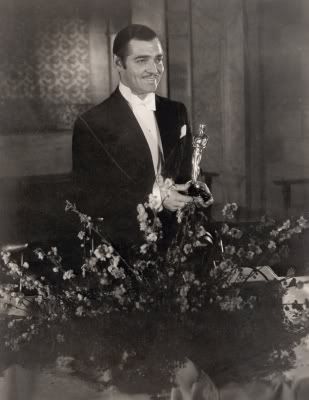
YouTube Video Links:
Judy Garland's Dear Mr. Gable:
http://www.youtube.com/watch?v=TfAwQSk9STI
Greatest Screen Legends Tribute:
http://www.youtube.com/watch?v=X-RWZUm7Cp8&NR=1
Okay...so I went a bit crazy with photos this time out. But with 72 films to his credit, it was hard enough to get down to just these!






 from me. I remember reading a book on his and Lombard's love and short life together, and just loved a 'macho' man who love a woman so much as he did.
from me. I remember reading a book on his and Lombard's love and short life together, and just loved a 'macho' man who love a woman so much as he did.
